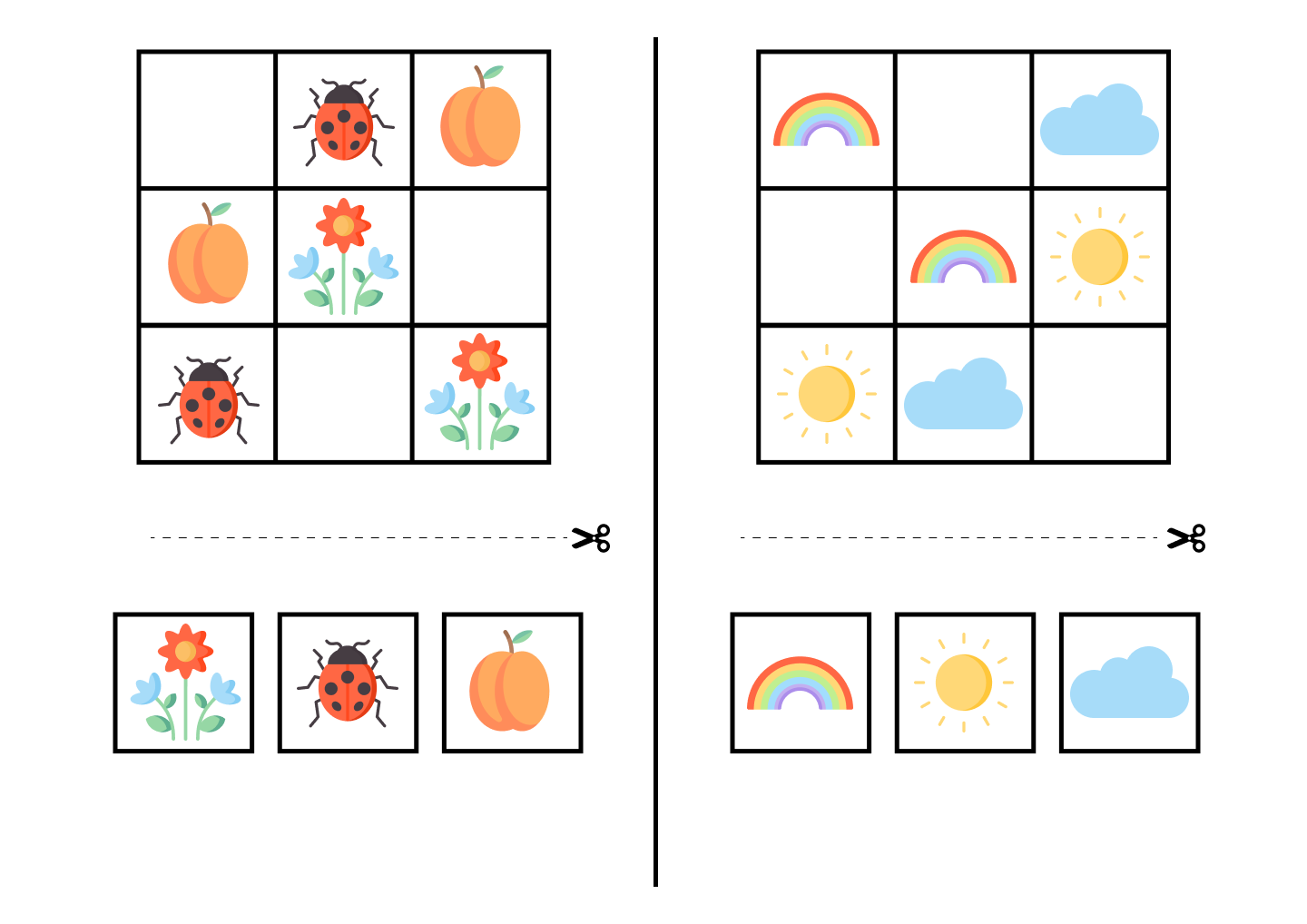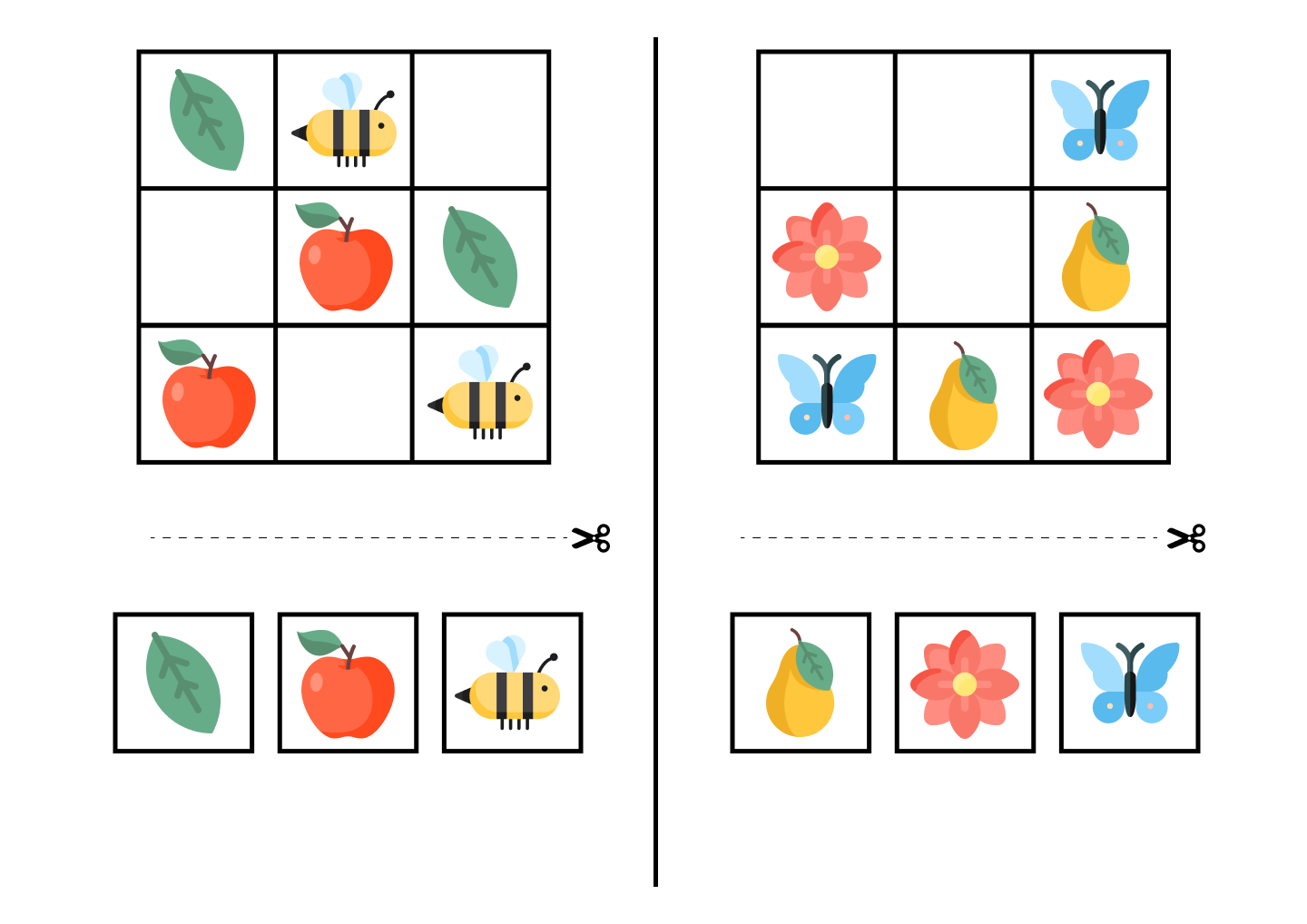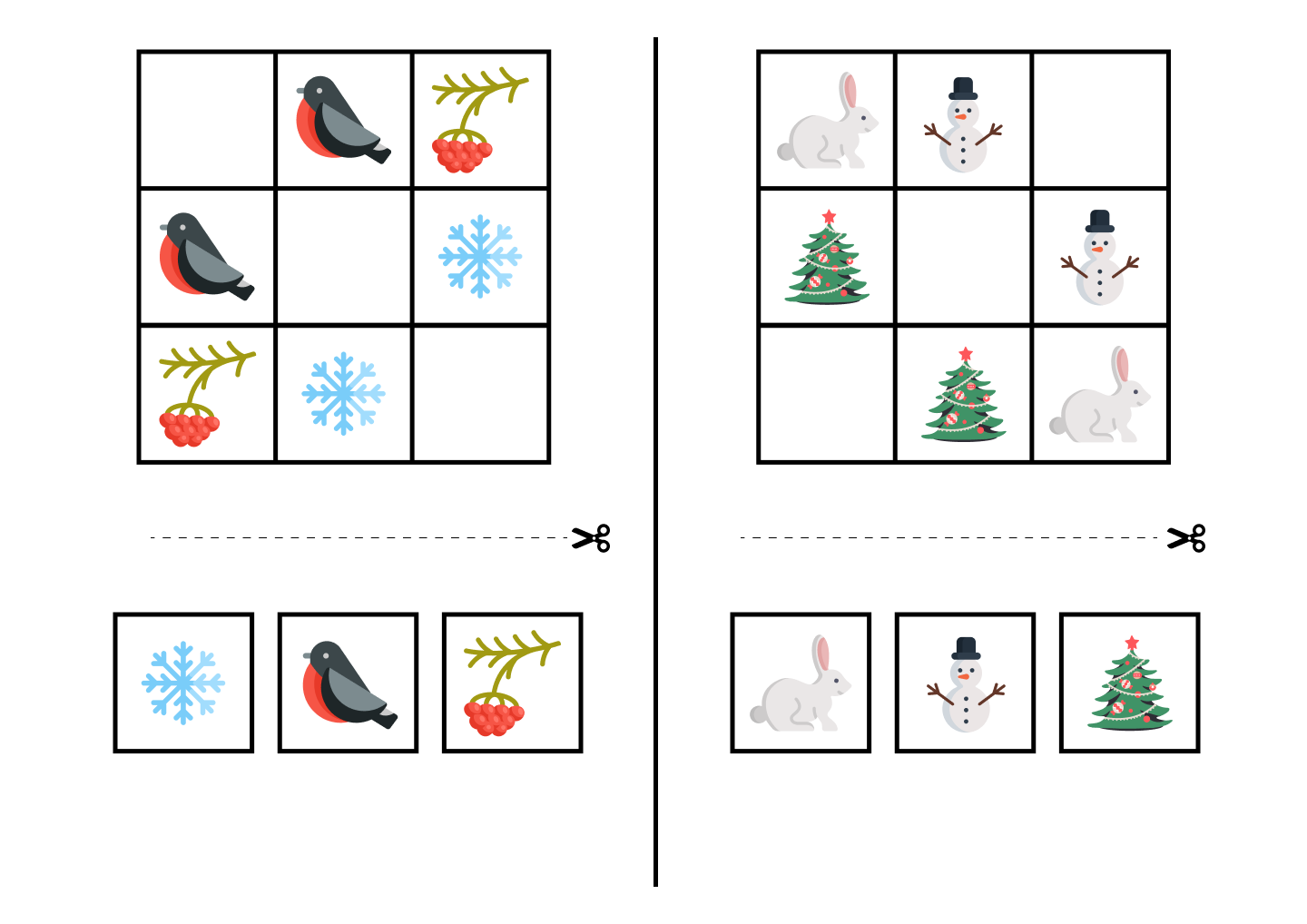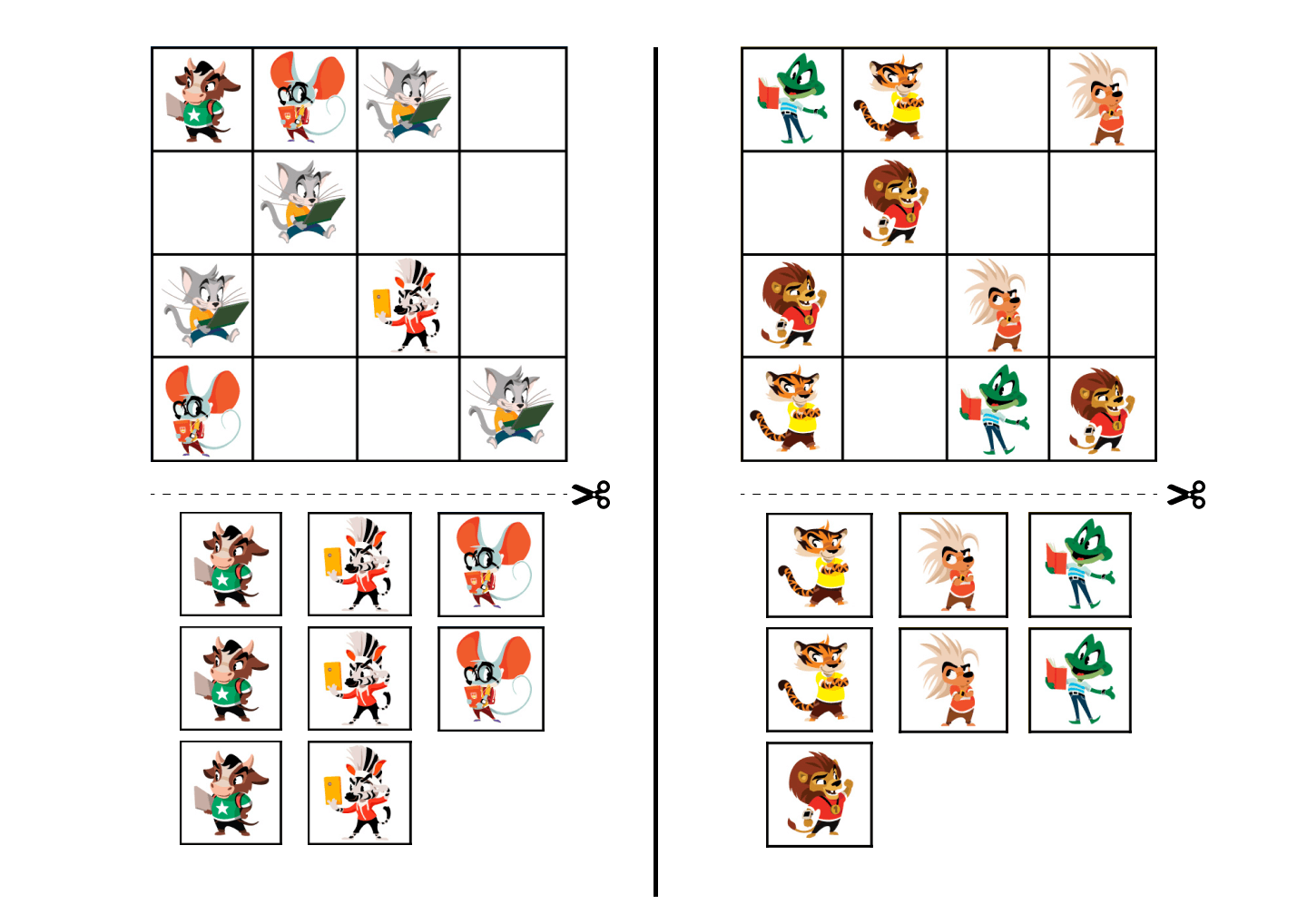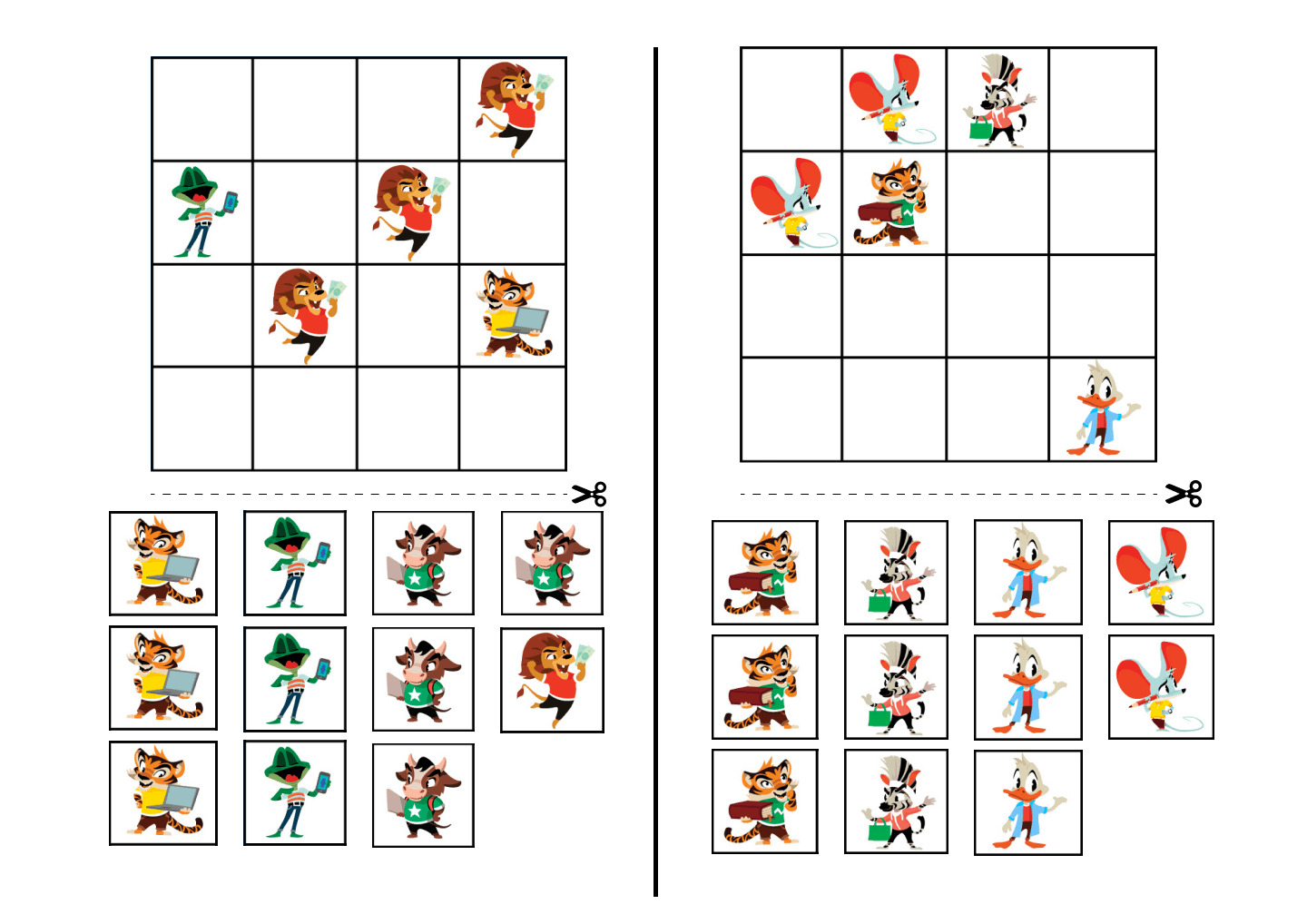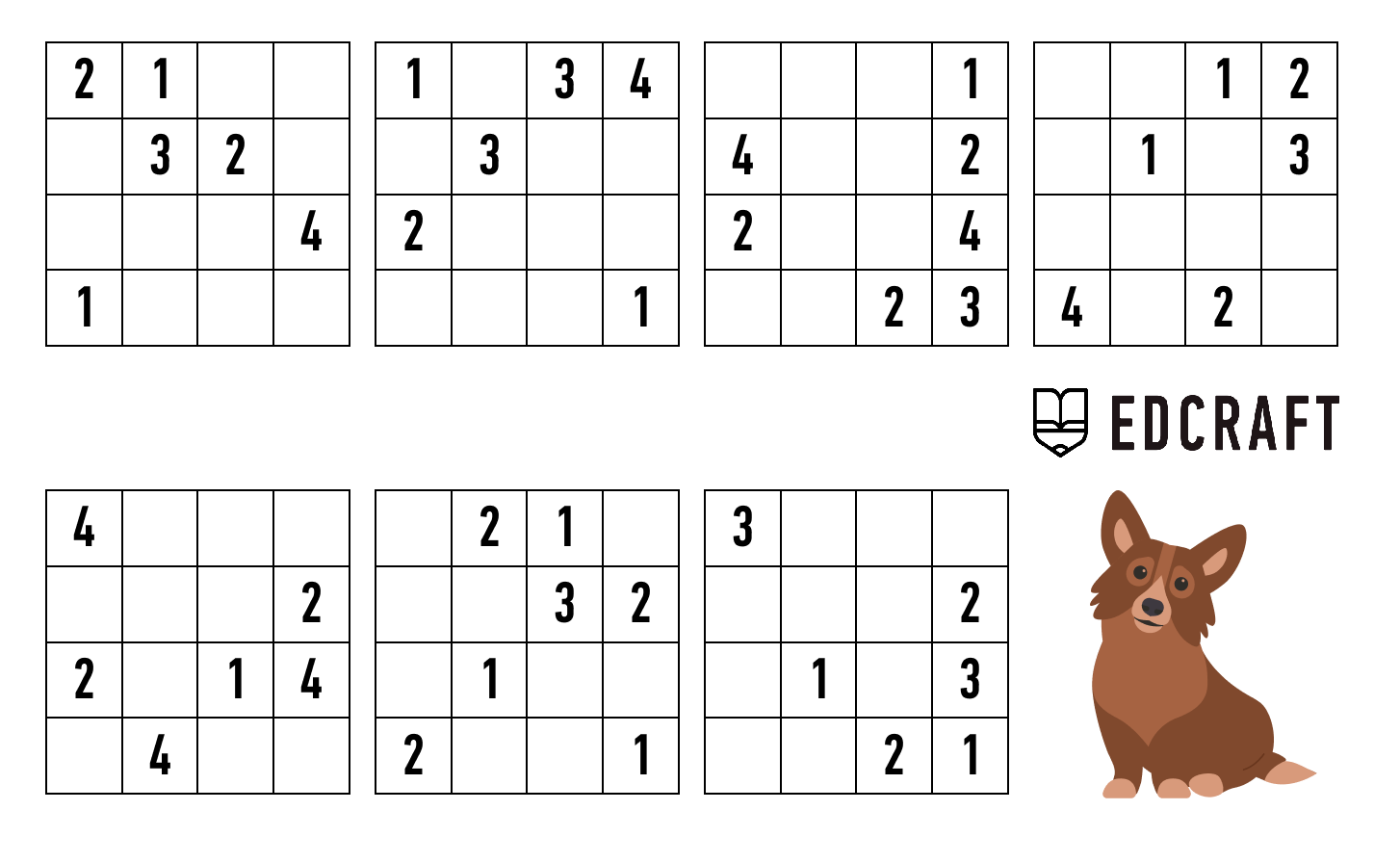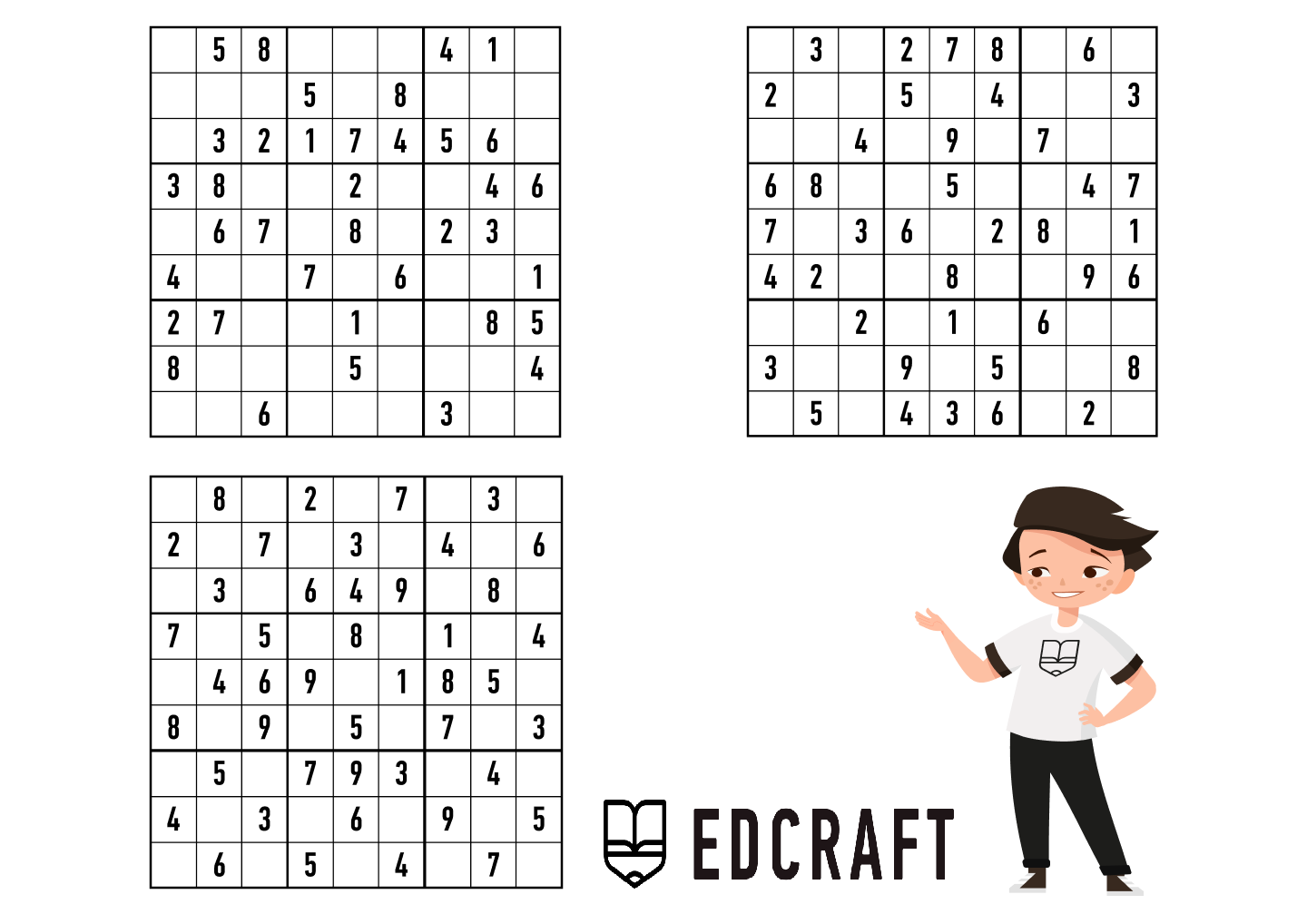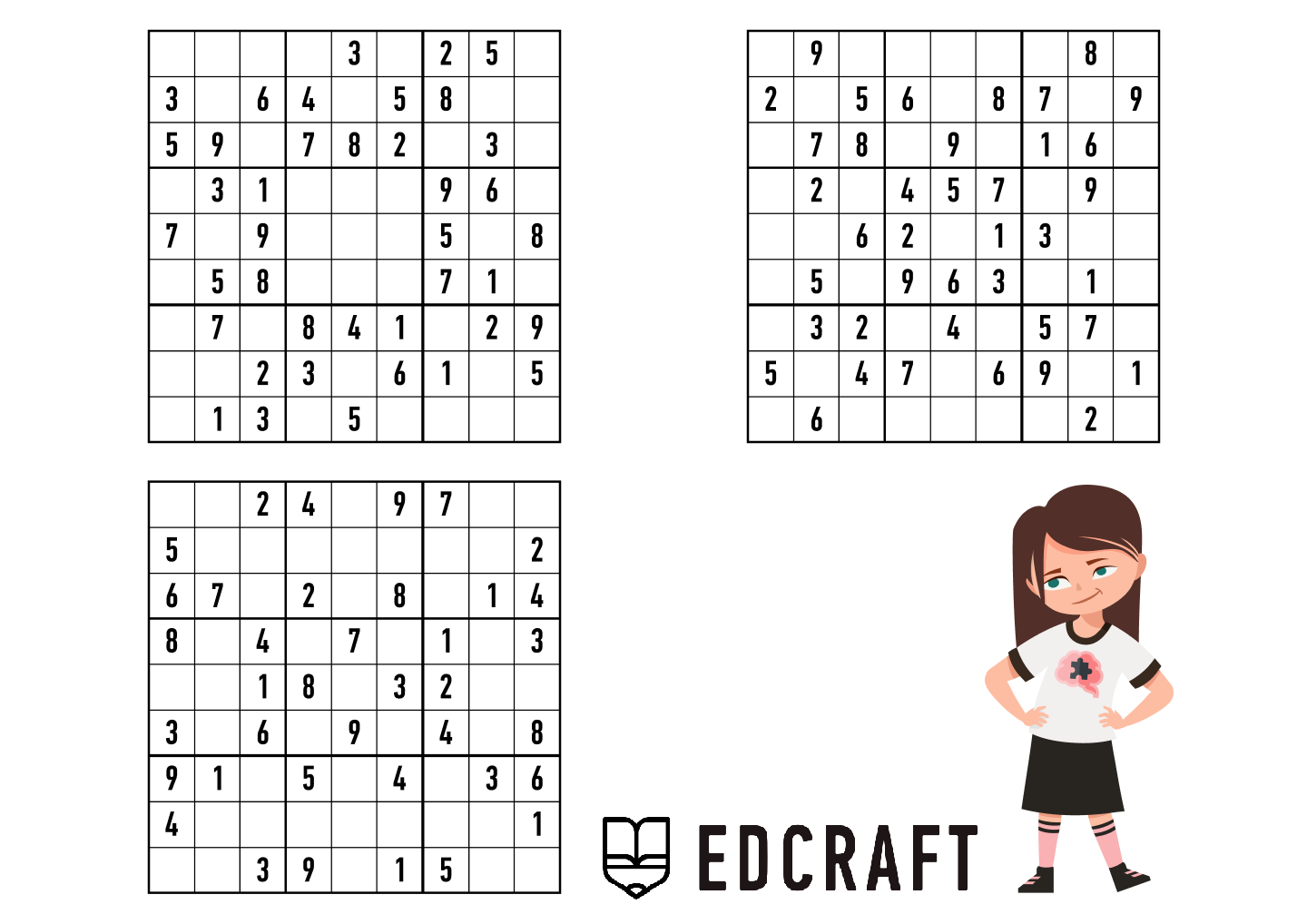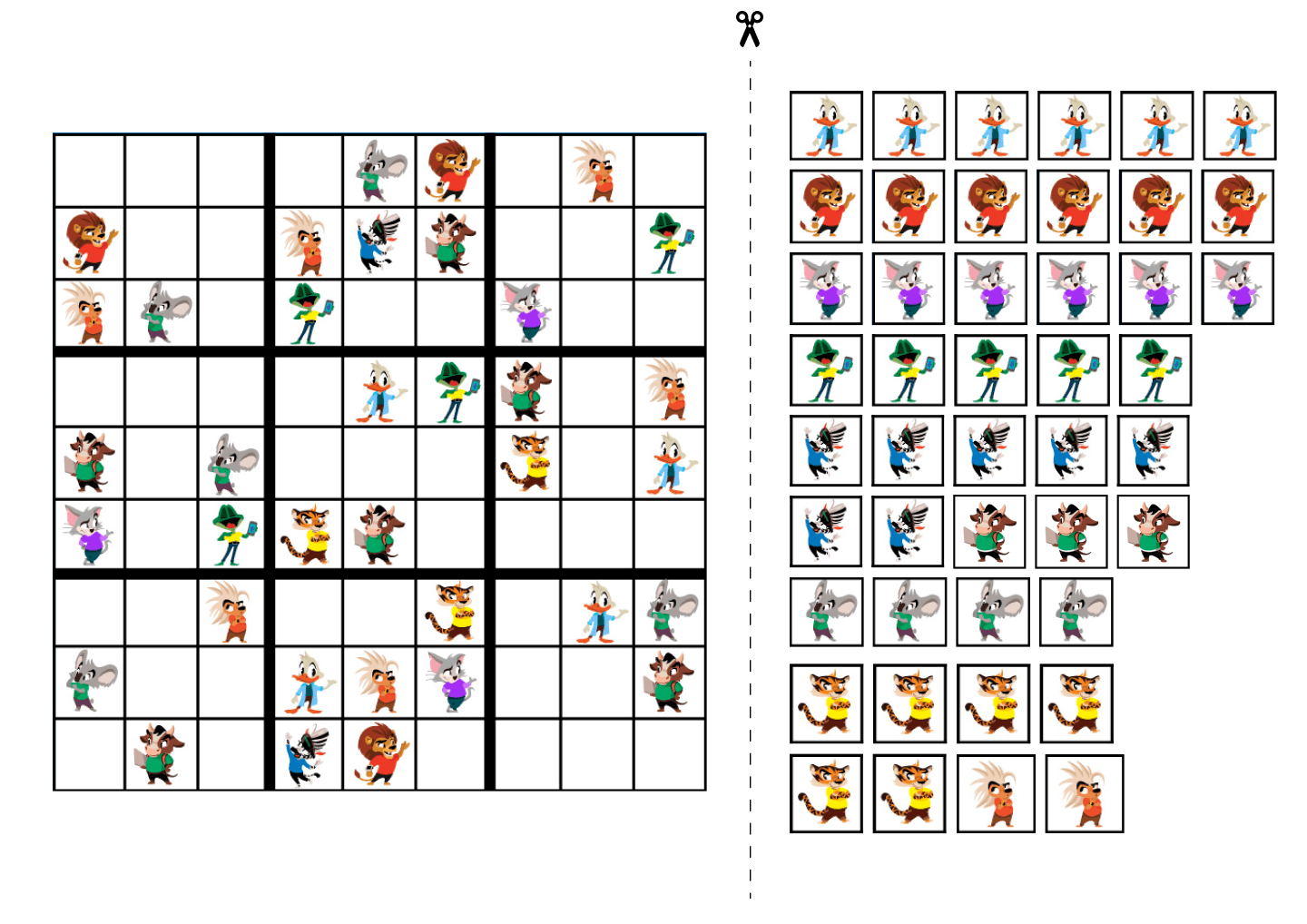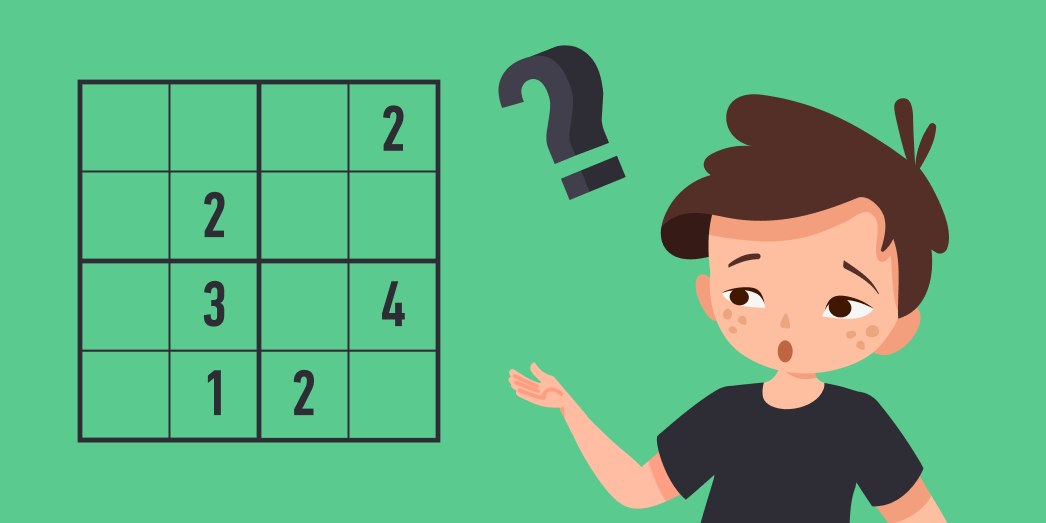
Sudoku puzzles for kids
Sudoku puzzles are often in newspapers and magazines or available online. This is a game with numbers that must be placed in a square with cells in a certain order. It is an activity which is good both for relaxing and developing logic. Scientists have found that Sudoku is good for developing working memory, which can be useful both for kids and older people.
It is often believed that Sudoku is originally a Japanese puzzle, but that’s not really true. It was invented by the American architect Howard Garns and first published in 1979 by Dell Magazines as Number Place. The ancient Chinese ‘Magic Square’ puzzle and the ‘Latin Square’ invented in the 18th century by the famous Swiss mathematician Leonard Euler can also be considered the modern game prototypes. In 1984, the puzzle was introduced in Japan by the name ‘Sūji wa dokushin ni kagiru’, which means “the digits must be single” in Japanese. Soon after, its name was shortened to Sudoku, and then the game became popular worldwide.
A classic Sudoku puzzle is a square with a side of nine cells. A person needs to enter numbers from 1 to 9 in each of them so that they do not repeat horizontally, vertically, or in small 3×3 squares that make up a large square. Some of the numbers are already set, making hints (or keys) to help a player. Depending on the number and location of these keys, Sudoku can be simple or difficult. Still, it always has only one correct solution. If you have never tried to do that, we will explain to you how to solve Sudoku at the end of the article.
Why is Sudoku good for kids?
For younger kids, the rules of the puzzle can be simplified. It can be difficult for children to cope with a classic 9×9 Sudoku, but they can easily solve a 3×3 or 4×4 one or games with pictures instead of numbers. To put the number or picture in a proper place, a child should concentrate on the entire field, which is not always easy from first sight. A person of any age should develop attention for solving Sudoku as, without this, mistakes are inevitable.
At the same time, Sudoku is one of the few logic games in which the result can be looked at. A puzzle that has been solved correctly brings moral and aesthetic satisfaction together with a sense of victory, which is also very important for little ones.
A number of versions of Sudoku puzzles for all ages and of different complexity levels can be found online or in different mobile apps. But for kids, it is much more useful to have them printed on a piece of paper.
Easy sudoku for kids
We can offer you several kinds of puzzles that can be good for children of different ages. The first Sudoku is better to be solved together with parents. An adult must be sure to speak out loud everything he or she does: “What figure is missing here? Maybe let’s put a three here? Oh, no, it is already here”, and so on. So, let’s play and learn!
3×3 Sudoku puzzles for kids
For little ones, there are 3×3 versions of Sudoku puzzles having bright pictograms instead of numbers. Even the youngest kids can try to solve them with a bit of help from their parents.
4×4 Sudoku puzzles for kids
For preschool kids, we have two versions of 4×4 Sudoku games. You can start with the version with pictograms of animals, which is not so difficult to solve.
Another version of the same puzzle is closer to the classical Sudoku and contains numbers instead of pictograms. Solving that, children can develop their logic and memory together with learning how to write numbers.
Difficult Sudoku for kids
So, let’s move on to more challenging games.
6×6 Sudoku puzzles for kids
6×6 Sudoku puzzles can be good for primary school children making their first steps at maths. If your kid can easily cope with 4×4 versions, it’s time to make tasks harder and more interesting.
Such puzzles can be very useful because they help you understand that there can be any shape of the block. The main thing is that the symbols inside it do not repeat. Thus, you can prepare yourself and your kids for solving ‘Shape Sudoku’ in which the blocks are not square.
9×9 Sudoku puzzles for kids
9×9 Sudoku puzzles are good for children aged 10 and older, teenagers, and adults. You can try to solve them at home, at school or going on the road, spending time together with family or friends, or even making a competition where people of different ages can be involved. This version of the game is considered classic, with 81 cells in a 9×9 square and 9 smaller 3×3 squares. The numbers from 1 to 9 are arranged so that in squares, horizontally and vertically, all numbers are different in all columns and rows.
Here, you can see a classical version of Sudoku containing numbers from 1 to 9.
And here, there is another version of a 9×9 puzzle containing pictograms. Looking at many pictures, a player should be as attentive as possible, as it is not easy to solve that task from first sight.
Such puzzles can seem large and complex, but it depends on the number of figures or symbols that have already been put down primarily. Some puzzles can be relatively simple, with only a few empty cells, while others are incredibly difficult 9×9. There are many strategies to solve them, but not all of them are really needed for children.
How to play Sudoku: a short tutorial for kids
Let’s see an example of a simple 4×4 Sudoku with a brief explanation of how to solve it.

The numbers in the cells must be arranged so that they are not repeated in lines horizontally, vertically, and in small 2×2 squares (there are four of them in this puzzle).
It is better to start from the block, column, or row with more cells already filled. In the picture, there are already three numbers out of four — 1, 2, and 3 — in the second vertical line. We only have to add the number 4.

Now let’s turn to the bottom left square. It already contains numbers 3 and 1. We just have to find a place for two and four. We cannot put the number 4 in the top cell of this square as we can already see the similar number in this line, and we cannot put 2 in the bottom cell because it is already present in the bottom row. Thus, you need to put 2 in the top cell and 4 in the bottom one.

Now we can easily fill in the missing numbers — 1 and 3 — in the bottom two lines.

In the right column, one cell remains empty, so we can put 1 in it.

Let’s turn to the upper left block. It lacks the numbers 1 and 3. 3 can be placed in any of the cells, but 1 is suitable only for the top one since it is already present in the second line from the top. So we put 1 in the top cell and 3 in the bottom one.

Now it is easy to put the last two numbers.

Lastly, let’s check that there are no repetitions in any of the horizontals and verticals. If so, the puzzle is solved correctly!
It is important to understand the entire algorithm: we select an object (vertical, horizontal, or block) with a minimum of empty cells, trying to fill them. You don’t need to do everything at once, as it will not work that way in more complex tasks. A player should think the way like in a crossword puzzle: after putting a new number, we check what it can give for further solution.
All our Sudoku puzzles are free to download and print. Versions with numbers are easy enough to print and then be solved on sheets of paper. As for Sudoku with pictures, you need to print the Sudoku field, separately print and cut out the pictures, and then arrange them on the field (they can also be laminated for multiple uses). So, feel free to start!

new engaging articles


